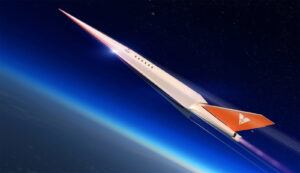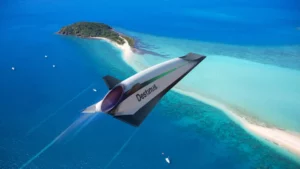Introducing Commercial hypersonic flight variations in the aviation world will help add a new definition to air travel facilities. Passengers who otherwise have to wait for connecting flights and unnecessary delays can now travel the distance from Tokyo to New York in an hour or the distance between Frankfurt to Dubai in 90 minutes.
From finalizing business deals to traveling for a medical emergency, these hypersonic commercial flight experiences will help passengers in the best way possible. Also, companies can schedule more daily flights under the influence of reduced traveling hours.
Are There Any Hypersonic Planes?
Coming to the question, are there any commercial hypersonic flight systems? Two highly ambitious projects are on board, trying to add a new definition to the travel experience.
‘Stargazer’ – Commercial Hypersonic Flight By Venus Aerospace
Andrew Duggleby (Co-founder and CTO of Venus aerospace) plans to channel Stargazer into reality by incorporating a rotating detonation engine that can spin at 20,000 rotations in one second. By rotating denotation, the company means to talk about the supersonic combustion that continuously happens inside the engine.
Stargazer is planned to take off like a conventional jet engine and will transition into a rocket speed once it reaches a higher altitude. The most exciting part is the flight route, which is not precisely space or the Karman line (100km above Earth’s surface). It will be accurately high enough to get an overview of the blackness of the space.

The company Venus Aerospace has been working on this Commercial Hypersonic Flight project since 2020 and is successful enough to raise $33 million to build the plane. As per reports, it will start with the flight testing using a 20-foot drone and then work on the Stargazer prototype.
With a rotating denotation propulsion system, the Texas-based Venus Aerospace aims to introduce the world to a massive performing jet that flies at 6900 mph.
Commercial Hypersonic Flight By Destinus
Another variant – in the commercial hypersonic flight base is the ambitious launch by Destinus. This European startup aims to launch its hypersonic project by 2030 – the flight is planned to operate at five times the speed of sound. This will reduce the overall duration to less than a quarter of the time required for commercial air travel.
The company is quite a fast achiever; it began operating in 2021. There are around 120 staff across Germany, France, and Spain, with the main headquarters in Switzerland. So far, the organization has successfully tested its first two prototypes and is about to run trials with Destinus 3 – the third prototype by the year’s end.
As per Martina Löfqvist (business development manager of Destinus), this commercial hypersonic flight project’s developers aim for direct autonomous flights. They will start developing small drones before scaling them up to passenger-carrying aircraft.

Hydrogen has been planned to be used as Destinus fuel because it is clean and renewable and shows hope of getting inexpensive with time. While there is still time to fulfill the long-term goal, the company plans to use the conventional fuel of jet A and switch when the flight finally starts speeding up around Mach 3. The theory is that – Hydrogen does not get better or best than Jet A until you hit supersonic speeds.
Coming to the design of the aircraft, the company is working on modeling and remodeling the same with every new prototype. By 2030 the company claims to launch a small-scale aircraft capable of commencing a journey with 25 business class passengers. By 2040, a fully scaled-up version will have various classes inclusive of the economy.
As of April 2023, the company has obtained $29.4 million from Spain Government – to expand its Hydrogen propulsion capabilities.
Winding Up – Commercial Hypersonic Flight
The Commercial Hypersonic Flight Variations are ambitious projects that will bring positive change if things remain on track. But now, only the future can define the range of possibilities behind each project.



